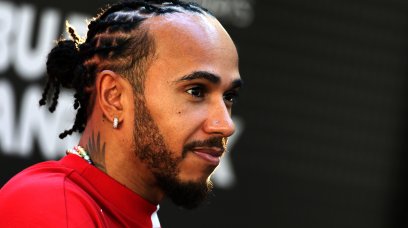Being a racing driver, especially a Formula 1 driver, requires a serious amount of fitness. The following are some of the best exercises you can do to ensure you're ready for your next race!
High intensity interval training
High Intensity Interval Training or HIIT is one of the go-to exercises for racing drivers. These exercises involve a maximum level of output for around 60-90 seconds with a cool-down period of maybe 30-45 seconds before pushing yourself again. Some examples of HIIT training are sprints, bike riding (pedaling fast, then slow, then fast again), and burpees. This must be repeated five to ten times.
Upper body
These exercises mainly focus on a driver's upper body strength, which is crucial in ensuring they are able to steer and control the car through both fast and slow corners. Examples of upper body exercises can include pushups, pullups, body rows, bench presses, and shoulder presses. Another driver specific exercise could include the V-Sit and steer movement. Ideally one must aim to complete three-five sets of any of the aforementioned exercises with 10-20 in each set.
Lower body
While a driver's lower body may not seem like the most important pressing area of concern. It most certainly is given that these workouts often constitute compound movements that strengthen the core as well as provide stability to counteract the g-forces when driving. The two best examples of these movements are deadlifts and squat. Much like the previously mentioned upper body workouts, the goal is to complete three to five sets with 10-20 reps being the target in each of those sets.
Core
Once again crucial to coping with the g-forces that come with driving on the limit, a racing driving needs an iron-hard core in order to maximise their performance. Exercises include leg raises, planks and crunches. To add an extra dimension, one could try using a medicine ball to help boost their stability as well. Three sets of the exercises must be the target with an aim of doing 20 reps.
Neck exercises
A racing driver's neck, especially when racing single-seaters, is their most crucial muscle. Given the amount of pressure exerted on a driver's neck through cornering, accelerating, and braking, it is crucial that a driver trains their neck muscles. While it is inadvisable to try any of the neck strengthening exercises on your own, some of the best ways to develop your neck muscles are to exert pressure on them via the use of resistance bands.
Balance
A racing driver needs to have phenomenal balance. As touched on earlier this benefits their ability to combat the g-forces exerted on them. Using a medicine ball or a balance board and doing any of the aforementioned core exercises or different variations of the upper and lower body exercises is the best way to improve one's balance.
Mobility
This involves stretching to improve both flexibility and recovery. Exercises include inch-worms, mountain climbers, the world's greatest stretch, and glute bridges.
While this is not a comprehensive guide, with several variations of movements and exercises coming into play when composing a driver's workout, the aforementioned exercises should leave you in a decent place for any motor racing event you intend to take part in.
Most read







